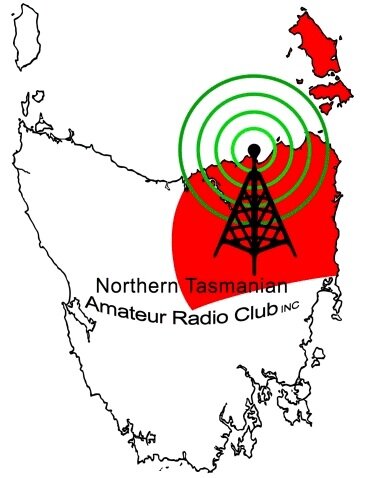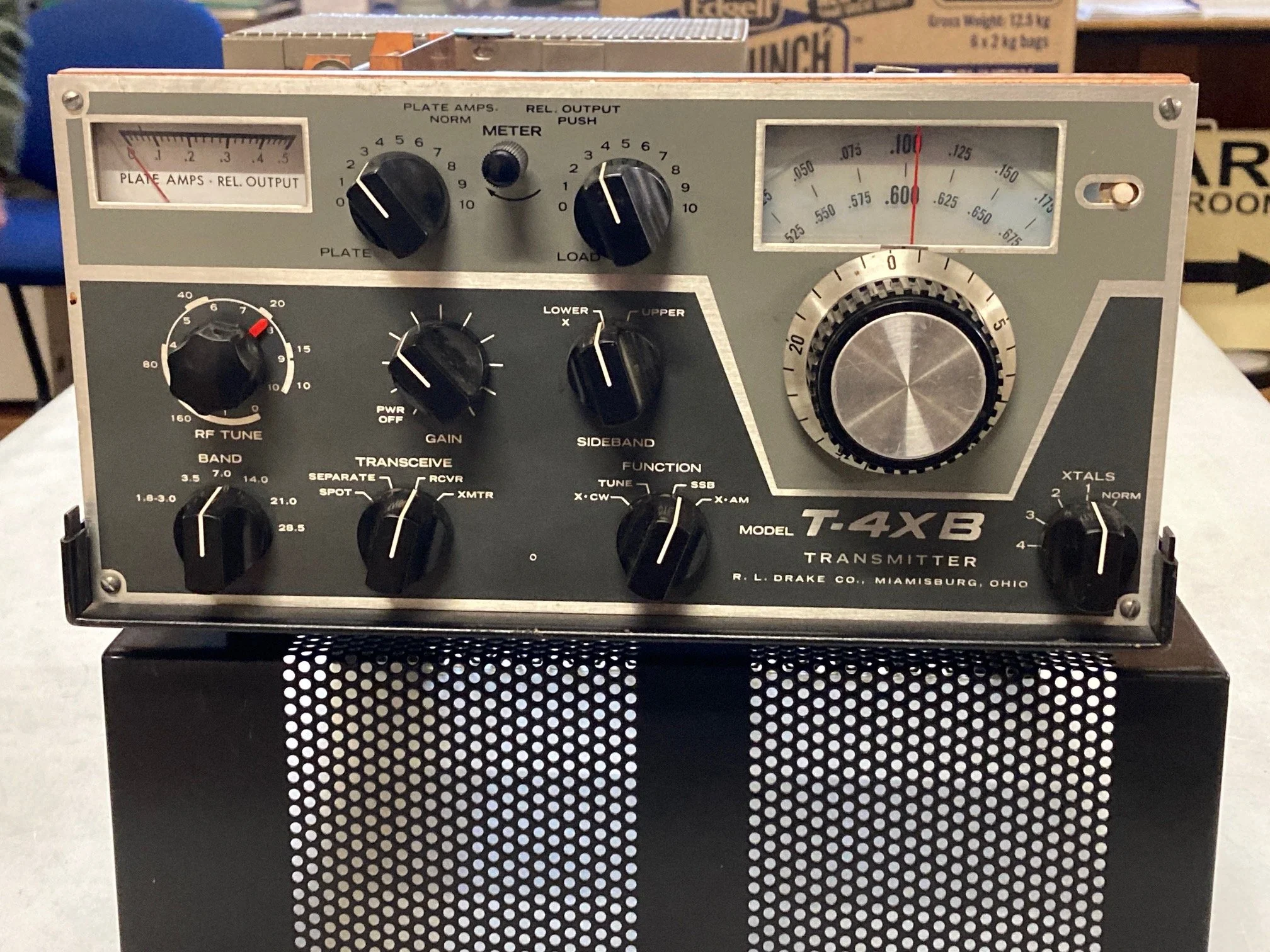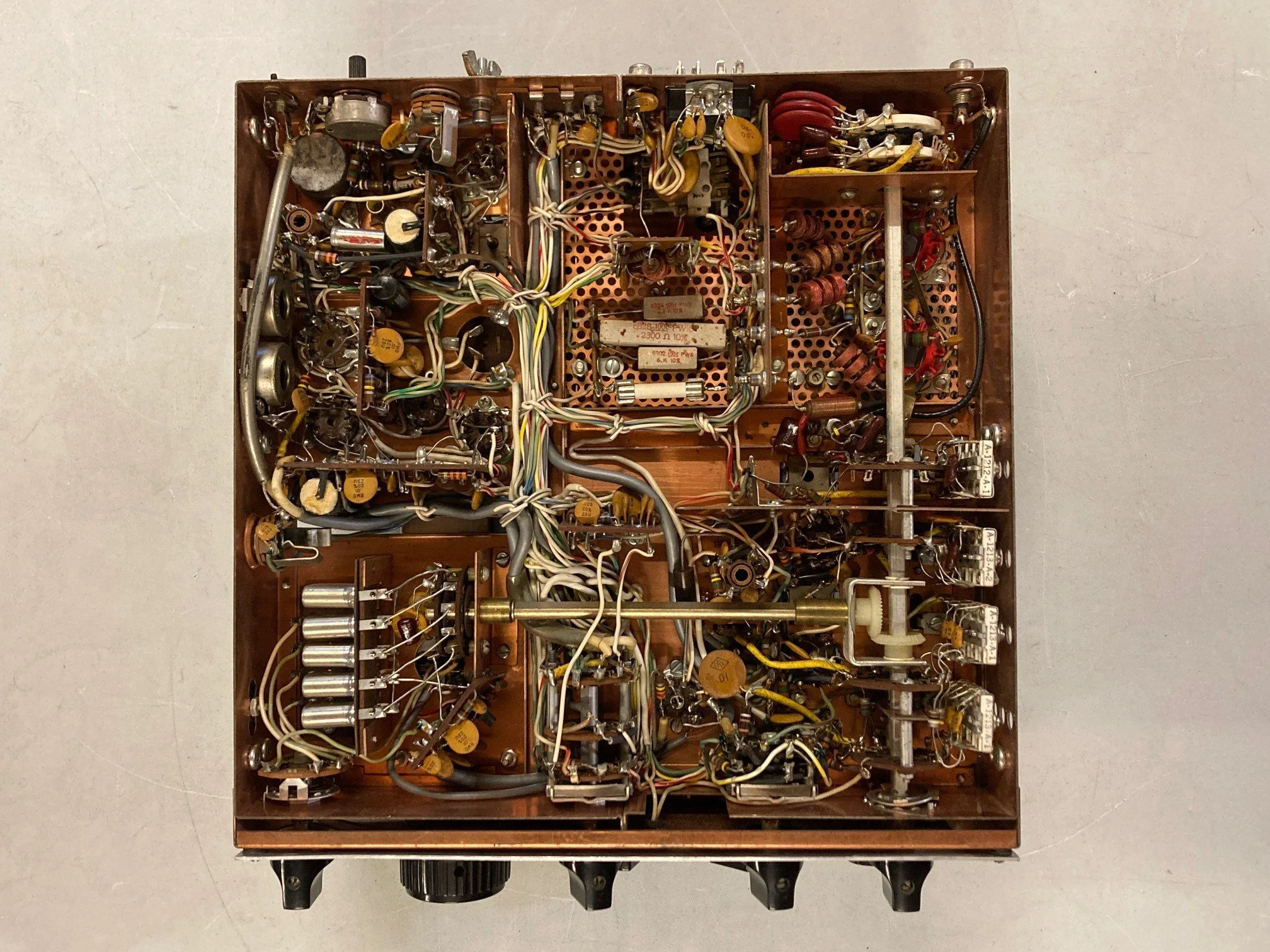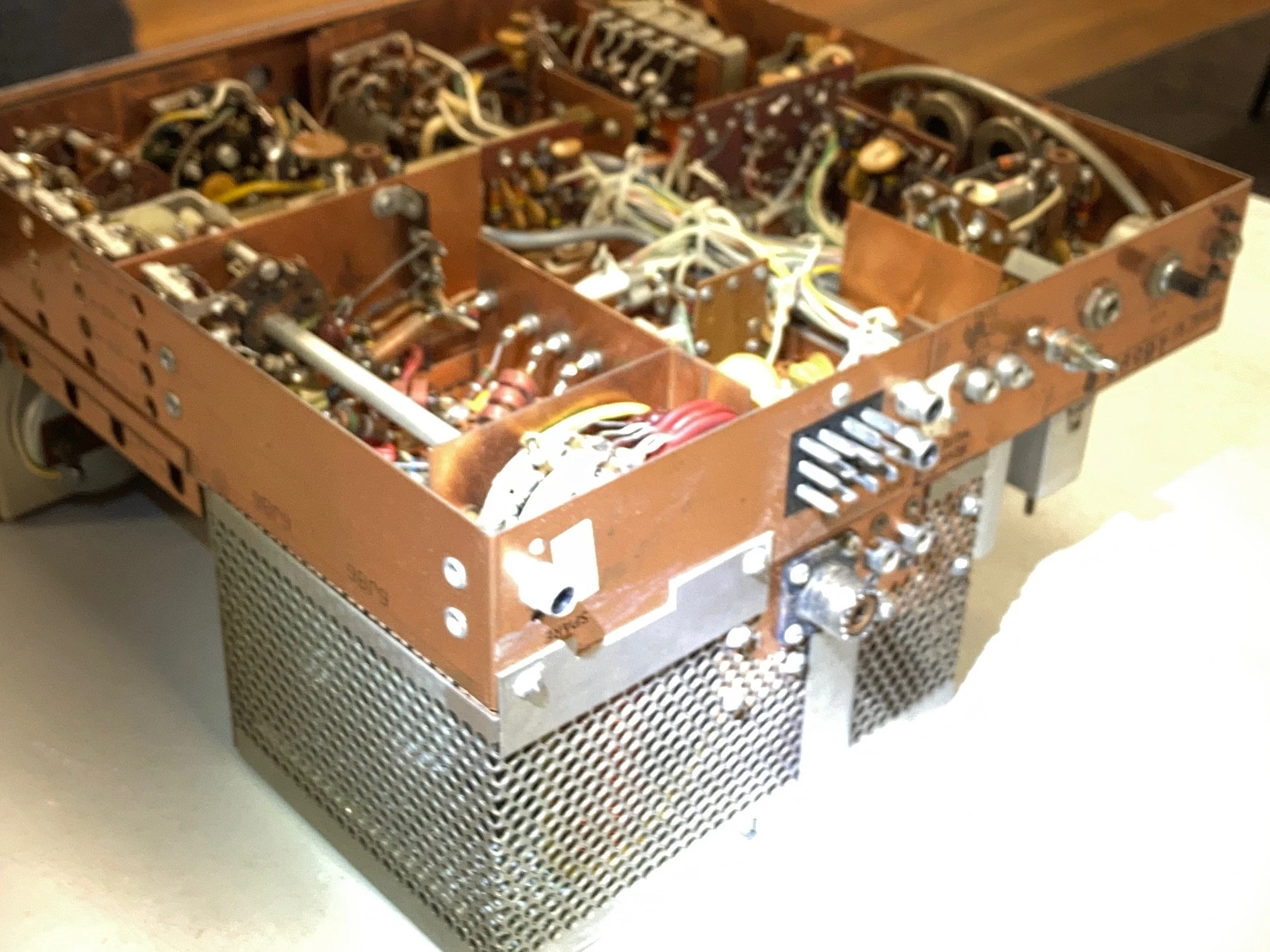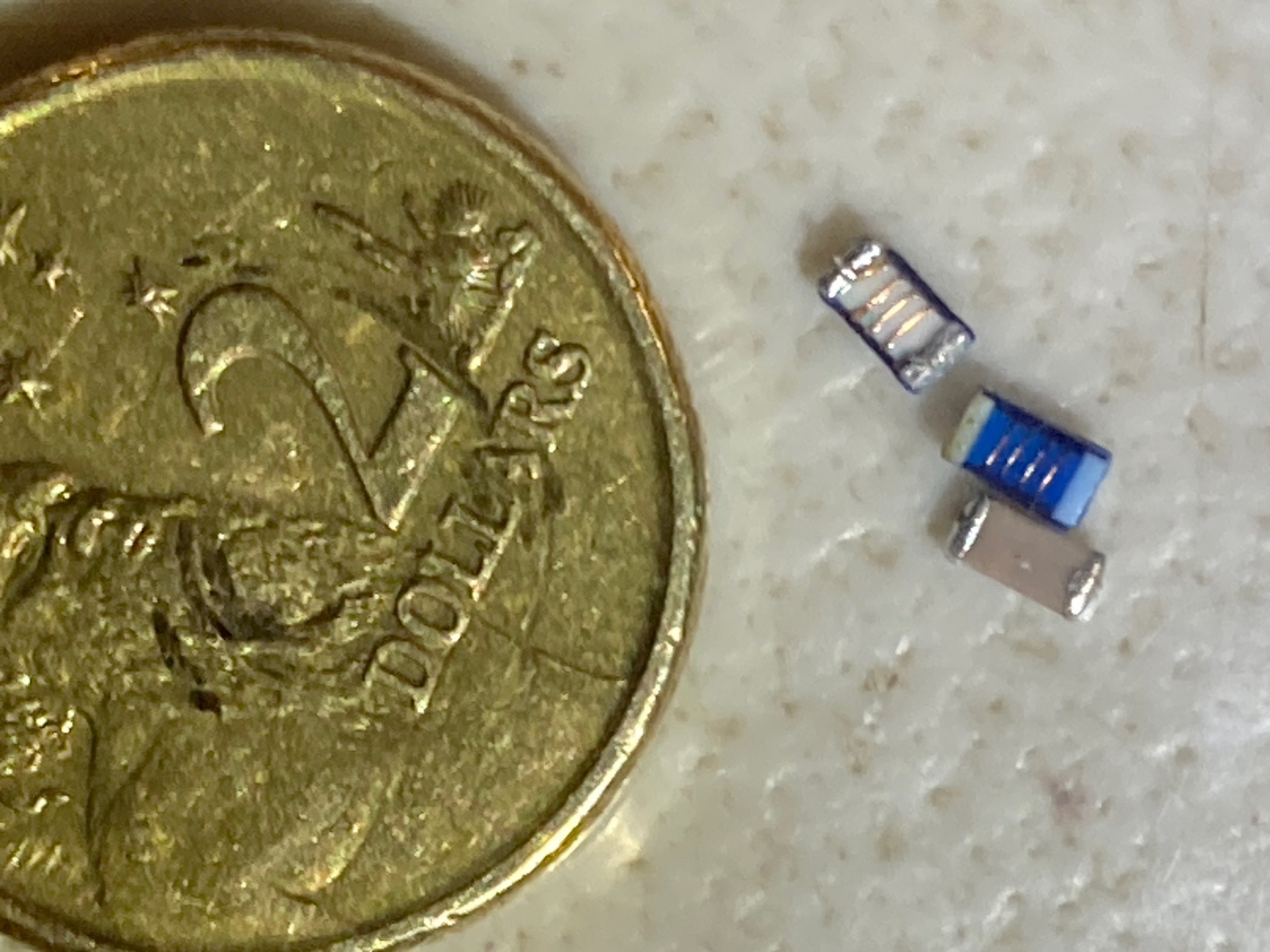Broadcast - 26 October 2025
Last technical night at the club rooms Ross VK7ALH brought in a piece of archival equipment from his collection. A standalone Drake T-4XB, it is the HF transmitter part of the T4X series, which is intended to pair with the R-4 receiver. Manufactured by R.L. Drake Company, Miamisburg, Ohio, in the late-sixties or early-seventies. Not really old but it is one of those pieces of equipment that has that classic “eye appeal” about it. As usual it didn’t take long for Ross to remove the outer cover. This revealed its most striking feature, it had a glorious copper plated chassis! It looked as though it may have had a clear protective layer but all was still in good condition. Drake was certainly into the “wow” factor. There was also some nice internal engineering with the coupling of different sections by the use of shafts and cogs to facilitate band changes and adjustments. Very well presented unit in good condition Ross.
Later in the evening we were lucky enough to have a presentation by Lionel VK7ZLB. This time loosely covering common radio frequency or RF components like capacitors, resistors and inductors including their testing and then ending the evening with circulators.
Lionel started off with the ubiquitous technician hand held Atlas LCR40 meter made by “PEAK electronic design” from the early 2000s. This was a game changer as it was an affordable automatic passive component analyser that you could carry around in your hand. It would test and display results for inductors, capacitors and resistors. All capacitive and inductive testing is conducted at one of the three sinewave test frequencies, 1 kHz, 15 kHz and 200 kHz approximately. Or for capacitors larger than 1 microfarad it uses DC charge analysis. The PEAK LCR is for low frequency testing of components, if you take its test parameters into account when in use it really was and still is brilliant.
However at higher radio frequencies the less ideal side of components can come into play, where you find out your capacitor both has some amount of inductance and resistance, and your inductor has some capacitance and resistance, and your resistors have some inductance and capacitance, as they're not an “ideal component”.
Lionel offered some examples of problems that can occur, like a standard wire wound resistor being accidentally used to replace a faulty carbon resistor of the same resistance value. Probably fine at low frequencies but if it was in an RF section then the wire wound resistor’s inductance becomes a major factor causing problems, unless it was specifically non inductive. This is where manufacturer data sheets become indispensable, along with thinking about what you are doing and where you are doing it in the circuit or system!
Who would have thought when the PEAK - LCR was released that in the next twenty years you would be able to hold an affordable Vector Network Analyser or Spectrum Analyser in your hand.
Lionel also went on to cover the following areas through the evening:
Carbon versus wire wound resistors
Wire wound verses non-inductive wire wound resistors
Non-inductive windings like Bifilar for conventional resistors and Ayrton-Perry for RF resistors
Circulators, Rat-race couplers or hybrid ring couplers, with some excellent diagrams and theory
Component Self Resonant Frequency or SRF.
Lionel brought in many examples of different types of components plus a couple of Micro-Diplexers that combine 70 cm and 2 metres. These were surface mount units and one was opened for inspection, components could be seen with the aid of a magnifying glass. Check out the picture of the cute surface mount inductors next to the 2 dollar coin on the NTARC web site under blogs. Thank you Lionel, you certainly refreshed some of the “grey matter” from way back.
Well JOTA is over for another year.
Strangely numbers seemed to be down at Rocherlea this year but the sign in book said differently. Participants mainly came from Scout Groups in the greater Launceston area this year. Those attending seemed to be more “engaged” and interactive across all the activities, with the highlights probably going to Fox Hunting and UHF CB walkie talky activities. On air conversations were between Rocherlea and Paton Park scouts via VK7RMD’s 2 metre repeater. Thank you to those home stations that took the time to respond to CQ JOTA calls, when there were no scouts available. The Northern Area Rover Crew or NARC for short, did an excellent job conducting the JOTI or the internet side of things. Especially as this entailed assisting ten Scouts at a time on computers as well as overseeing their smooth flow through all the activities on offer. Thanks to Kevin VK7KJL, Colin VK7ZCF, Ian VK7IH, Tony VK7YBG, Rick VK7HBR, Idris VK7ZIR, Andre VK7ZAB and Stefan VK7ZSB for their efforts. It was excellent to see NTARC members giving up their time to help with this long running scouting event.
And now something probably never to be repeated at one of our JOTA’s… one of the Scouts lost a tooth while enthusiastically sending Morse Code! That has to be a first surely? No nothing violent, but Campbell, from the 1st Tamar Group, did lose a baby tooth, “it just fell out”, probably due to natural causes for an eight year old. He was extremely excited and we promptly found him a clip lock bag to keep it safe. At least until he could put the tooth in a glass of water beside his bed, to wait for the tooth fairy to visit over-night.
Mug Order – final orders for the white mugs for drinking out of, those that have our club logo on one side, personalised with your name and call sign on the other. The order is about to be placed, so if you would like one then please email secretary@ntarc.net to secure yours. Please specify what name is to be printed above the call sign. The final price will be about $12 depending on eventual quantity ordered.
As always pictures will be available on the NTARC Web site under “Blogs” for this broadcast. NTARC Blogs
UPCOMING EVENTS
On Air Test and Technical Net session - Every Wednesday, Test-Net and CW course on 3.580 MHz from 7 pm, then a Technical Net on 3.567 MHz from 7.30 pm till 8.30 pm. Your host for the evening is Nic VK7WW.
Club Room Technical night - The next session will be this Wednesday the 29th of October and will commence at the usual time of 6.30 pm at the Club Room Archer Street, Rocherlea.
Coffee Morning - Held every Friday in the NTARC Club rooms. Time is from 10 am to noon.
Finally – If you have any items of news please email them to the Secretary at the following address news@ntarc.net all items to be received no later than 5 pm on the Friday prior to the Broadcast.
That’s all folks,
73, Stefan VK7ZSB.
